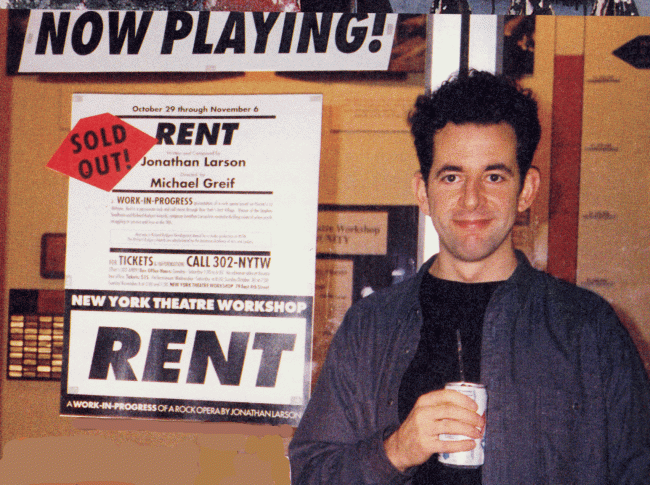
Jonathan Larson is mostly remembered for his untimely death just as his creation, Rent, was about to open. I’d prefer to celebrate his life.
A previous show, before Rent, was autobiographical, and when it had a posthumous off-Broadway premiere and an RCA recording, it gave us a look at his career. Larson wrote tick…tick…Boom! In 1989, when he was on the verge of turning 30. He put aside tick…tick…Boom! when he started writing Rent, and it never had a theatrical run until five years after his death.
When tick…tick…Boom! finally opened at the Jane Street Theater in 2001, one of the musical’s producers was Victoria Leacock, one of Larson’s closest friends. So much has been written about Rent and about Larson’s death; Leacock is the ideal person to talk about Larson’s life and his work.
Leacock was a slender, youthful-looking 38 in 2001. She said that when she met Larson she was more blatantly sexual, exotic and funky. She was a freshman at Adelphi University, on Long Island, and Jonathan was a senior. She was 17, he 21. They became lovers.
Leacock says she first saw Jonathan when he starred as Christ in the college’s production of Godspell in 1981. He was an acting major, a tall, gangly guy with black hair, and “a very good actor,” according to Leacock. “A better actor than he was a singer. He was Malvolio in Twelfth Night that year. I fell instantly in love. Even though I’d been going to Studio 54 since I was 14 and there wasn’t much in life that I hadn’t tried, Jonathan was the first man I loved.”
On the right, Leacock & Larson: 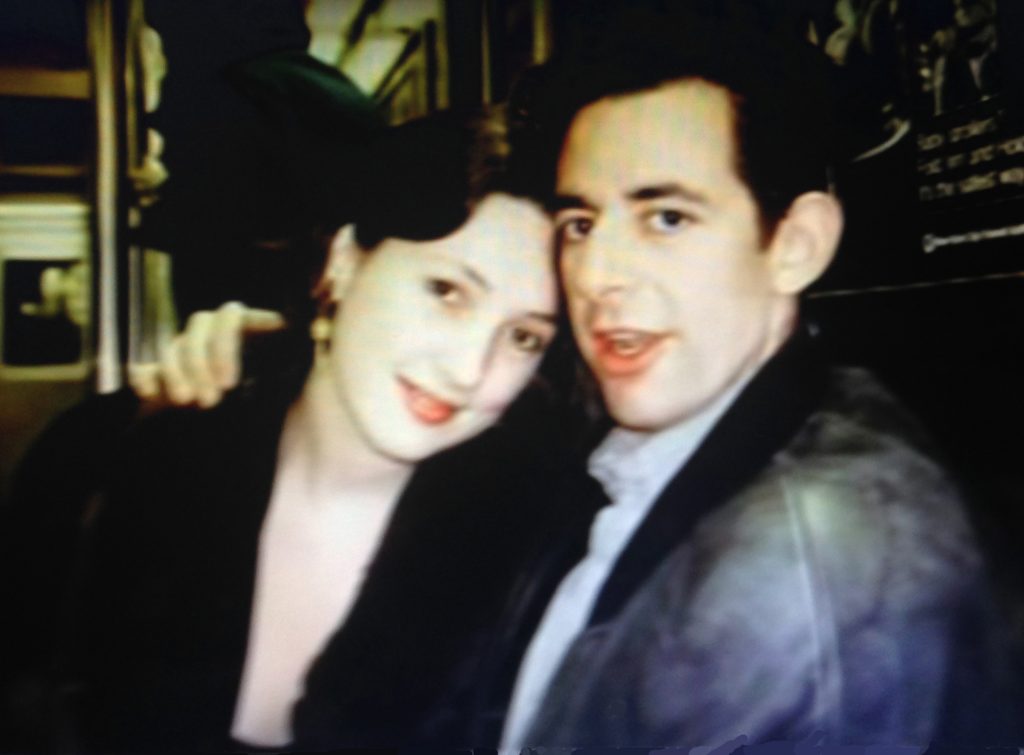
Larson was intrigued by Victoria partly because she was Bohemian and partly because she had a father who was in the creative field. Richard Leacock was a celebrated director of cinema verite documentaries. Her mother was Marilyn West, a fashion model and painter. Jonathan fell in love with Victoria “because I’m generous and loyal, and he appreciated my belief in him. Also because I was exotic. I wore kabuki makeup and unusual clothes. He also enjoyed my approach to life. For example, when I threw birthday parties I wanted an eclectic crowd and I invited my dry cleaner, a movie star and the guys from my deli, and Jonathan loved that.”
She fell for Jonathan because “he was funny, articulate, and had strong opinions. Some people might say he was opinionated. I’d say he just was self confident. He knew he had talent, and he did, so that wasn’t being cocky.”
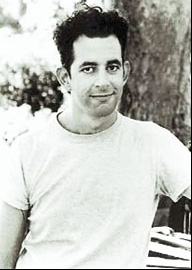
Jonathan had grown up in White Plains, a suburb north of New York City, where he studied tuba and piano and put on shows in his backyard. In high school, he was the star in the school’s musicals and displayed a good baritone voice. He won a scholarship to Adelphi as a drama major, and soon was writing as well as acting in musicals and dramas. When he was at Adelphi, Jonathan wrote a fan letter to Stephen Sondheim. Sondheim wrote back and became a mentor.
Among Larson’s most interesting student plays was Herstory, or Little Miss Muffet Spat On Her Tuffet, a cabaret about women’s issues performed at Adelphi in 1980. Then The Steak Tartare Caper in which fictional detectives Nick and Nora Charles, Nancy Drew and Sam Spade team up to discover a murderer. The songs include “It’s True, I’m Nancy Drew” and “I Made My Decision at Green and Division.” Larson’s punning continued with American Scream, or Armageddon My Act Together & Taking It On the Road at Adelphi in 1982.
The school musical of his senior year was called Sacrimoralimmorality, with music by Jonathan and book and lyrics by his friend David Armstrong. It was an attack on Jerry Falwell, Jesse Helms and the Christian Right, and their positions on school prayer and homosexuality. “It was riveting, and the songs were great. This was a show by and for our generation, attacking the pressure to conform,” says Leacock, who remembers that the final scene showed a crucifix transform into a swastika.
Before the end of the school year, Victoria and Jonathan had a big fight and broke up. “I was totally supportive of his writing. At the same time I wanted to be a filmmaker and he never asked me anything about my work and my ambitions. So I just exploded and said `Jon, I can’t just be your cheerleader.’ He started crying. It was the only time I ever heard him cry. And he said `Please don’t leave me.'”
Victoria and Jonathan stopped being lovers, but they remained close. “I became his best work friend. He always ran his ideas past me, because I know how to listen to unfinished work.” Leacock says she and Jonathan were like Judy Garland and Mickey Rooney, always getting their friends together to put on a show. 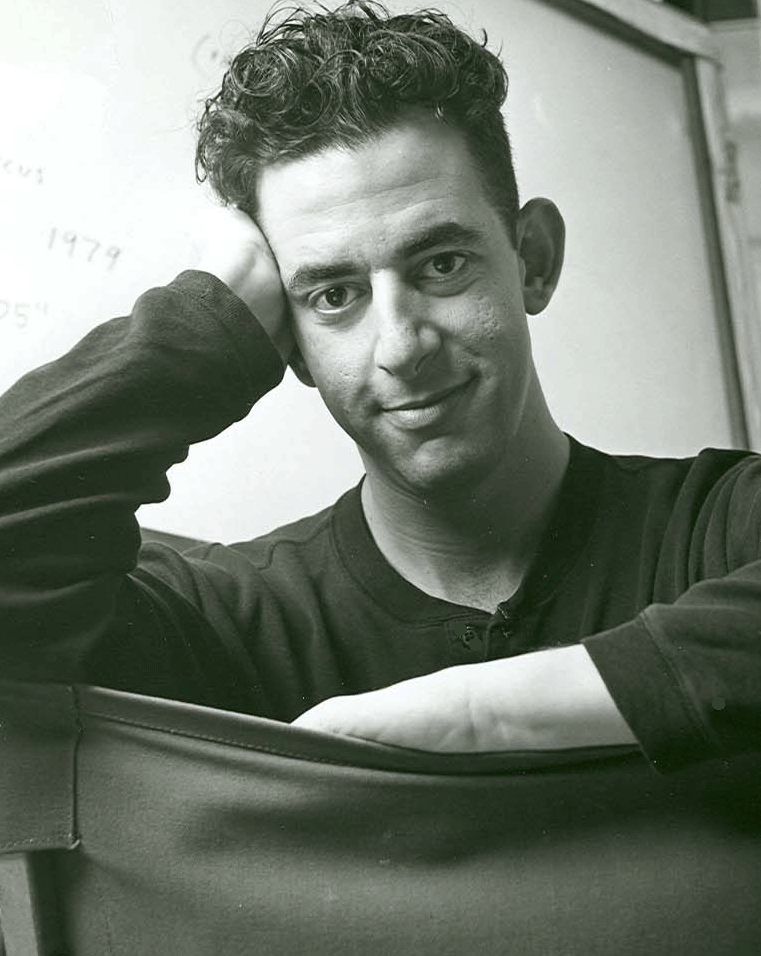
Jonathan graduated, and Victoria dropped out of college. He rented an apartment on the West Side, then moved into a grungy place downtown that resembled the setting of Rent. “He had a strong work ethic and wrote for eight hours almost every day. He refused to write jingles for companies whose politics or ethics he didn’t approve, or to accept money for doing any sort of work for such companies. He chose, instead, to wait tables.”
Victoria and Jonathan were part of a group of six who later became, in various ways, the characters in Rent. “I’m a bit of Marc, because he’s a filmmaker like me.” The filmmaker’s girlfriend, in the show, leaves him for a woman, and that’s what one of Larson’s real-life girlfriends did. The female character in tick…tick…Boom! is a composite of that woman and another dancer girlfriend of Jon’s.
There’s a sad parallel too. “Out of our close group of six, four of us were diagnosed with HIV, and three died of it.” Ali Gertz died in 1992, Gordon Rogers and Pam Shaw in 1995. All were in their early 30s.
In 1984 Larson wrote a script, lyrics and music based on the novel 1984 by George Orwell, but was never able to get the stage rights. “My idea,” he said, “is to present, through musical theater, the story and ideas of Orwell with an epilogue that compares it to today’s world.”
Larson wrote most of the lyrics and all the music for Prostate of the Union, or The Evils of Ronald Reagan’s America, performed in 1987 at Adelphi, where he had graduated three years earlier.
His political idealism also found outlet in a 1989 piece called Presidential Politics, a 25-minute satirical musical about the marketing of a presidential candidate, workshopped by National Lampoon but never produced.
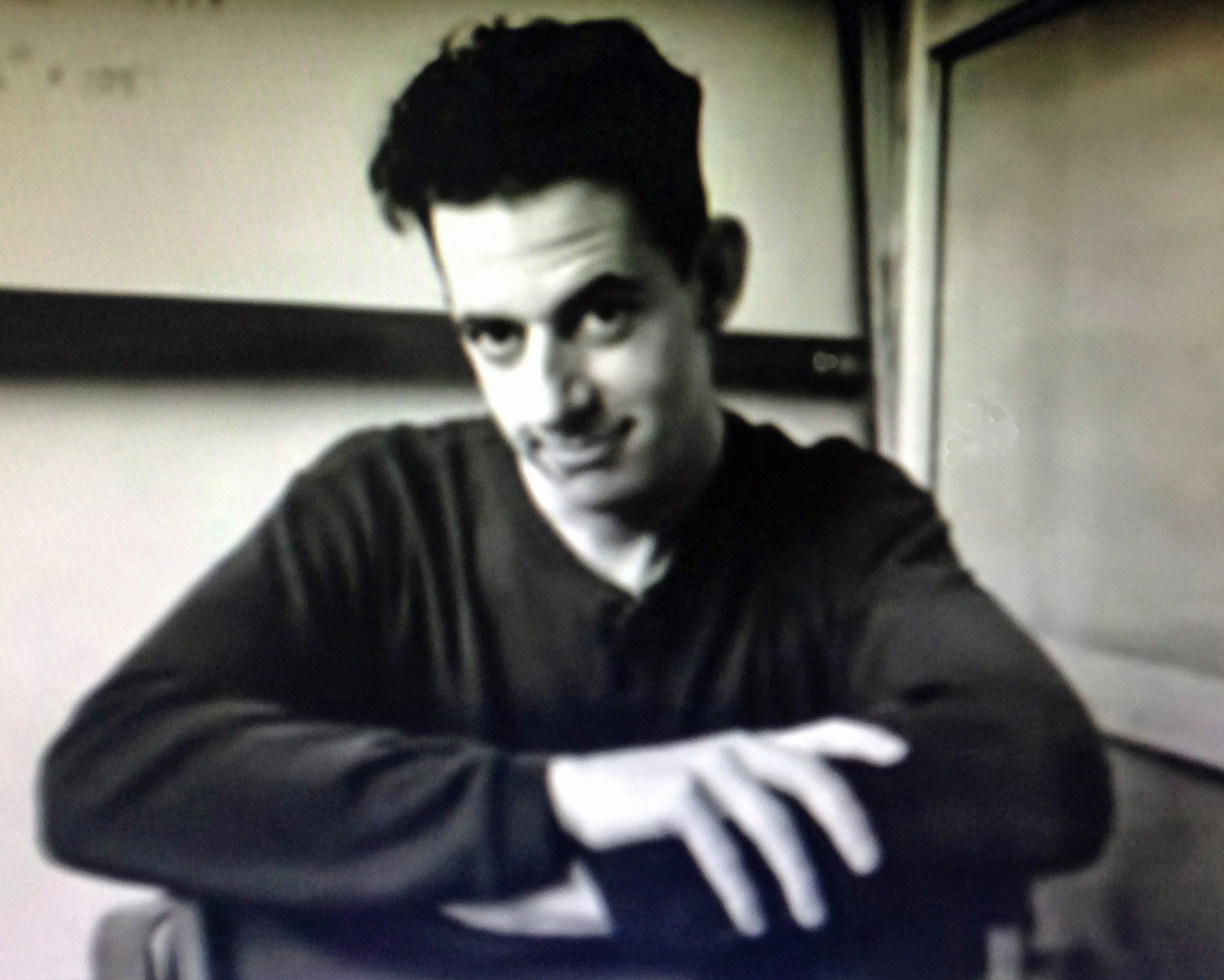 In 1995 Jonathan wrote music and did the casting for “a post-modern musical comedy allegory about capitalism,” J.P. Morgan Saves the Nation, which was created for performances at the corner of Broad & Wall Streets in Manhattan’s financial district. The daffy music ranged from ragtime to disco as the script questioned the ideals that Morgan represented.
In 1995 Jonathan wrote music and did the casting for “a post-modern musical comedy allegory about capitalism,” J.P. Morgan Saves the Nation, which was created for performances at the corner of Broad & Wall Streets in Manhattan’s financial district. The daffy music ranged from ragtime to disco as the script questioned the ideals that Morgan represented.
Meanwhile, Jonathan Larson spent years working on a musical called Superbia. The musical tick…tick…Boom! portrays the composer preparing and giving a workshop performance of Superbia. And one of the songs in tick…tick…Boom!, called “Why,” quotes a line from a Superbia song: “Liquid crystal digital readout.” Leacock relates that “Jon dreamed it up late one night after imbibing something. It was based loosely on Orwell’s 1984 and was about an Out who falls in love with an In. Rock stars take over the planet, and there are allusions to Hollywood and space ships. The show had seven years of rewrites and many different versions. In some the lovers lived happily ever after, in some one or both die. Sondheim told Jonathan that `LCD Readout’ was an amazing song. We developed Superbia at Playwrights Horizon, then the Public Theater, where it had a disastrous public reading at Christmas-party time and virtually no one showed up to see us.”
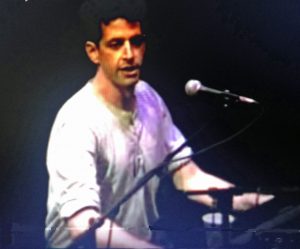 “During these years we became friends with Roger Bart, who has the beautiful singing voice that Jonathan always wished he had. And Marin Mazzie. Jonathan formed the J. Glitz Trio — Jonathan, Marin and Scott Burkell — who sang corny songs like `On Broadway’ in clubs. Roger sang the hero in all our auditions and performances of Superbia, and Marin was in many of our performances too.”
“During these years we became friends with Roger Bart, who has the beautiful singing voice that Jonathan always wished he had. And Marin Mazzie. Jonathan formed the J. Glitz Trio — Jonathan, Marin and Scott Burkell — who sang corny songs like `On Broadway’ in clubs. Roger sang the hero in all our auditions and performances of Superbia, and Marin was in many of our performances too.”
Although Leacock once thought Jonathan was too self-absorbed, she says he became a supportive friend. “When I directed a film starring Molly Ringwald, Jonathan got up at 6 AM to pick me up and take me to the set.” Reality and art came together when Ringwald took over the female lead in tick..tick..Boom! for a month in September of 2001.
Leacock acted as Larson’s unofficial producer. She arranged for readings in people’s houses, where she provided wine and cheese.
In 1989 Jonathan started writing a show he called 30/90 about a man, like himself, who was going to turn 30 years old in 1990. He called it “a rock monologue with band.” His character asks himself if he should give up his composing dreams and become an advertising copywriter. The hero agonizes over his love life and his career, frustrated that he hasn’t yet been recognized. His best friend tells him that he’s HIV positive, just like Jonathan’s friend Matt O’Grady, who was diagnosed in 1987. About 30/90, Leacock said “It’s totally a snapshot of his life and time and my life and time.”
Jonathan then was working as a waiter on the weekend brunch shifts at the Moondance Diner. From Monday through Thursday he’d stay in his apartment at a dinky little electric piano, composing. He attended rehearsals of Sunday in the Park With George. Out of those two inspirations, the diner and the Sondheim show, he conceived a comic song called “Sunday” which is a parody of the title song of Sondheim’s musical. It became one of the highlights of tick…tick…Boom! Jon wrote a proposal for a grant in 1989: “I believe theater should, and could, again be a source of pop music which could attract younger audiences. I’m 29 and support myself primarily by waiting tables.”
To the right, Larson waiting tables at the Moondance Diner: 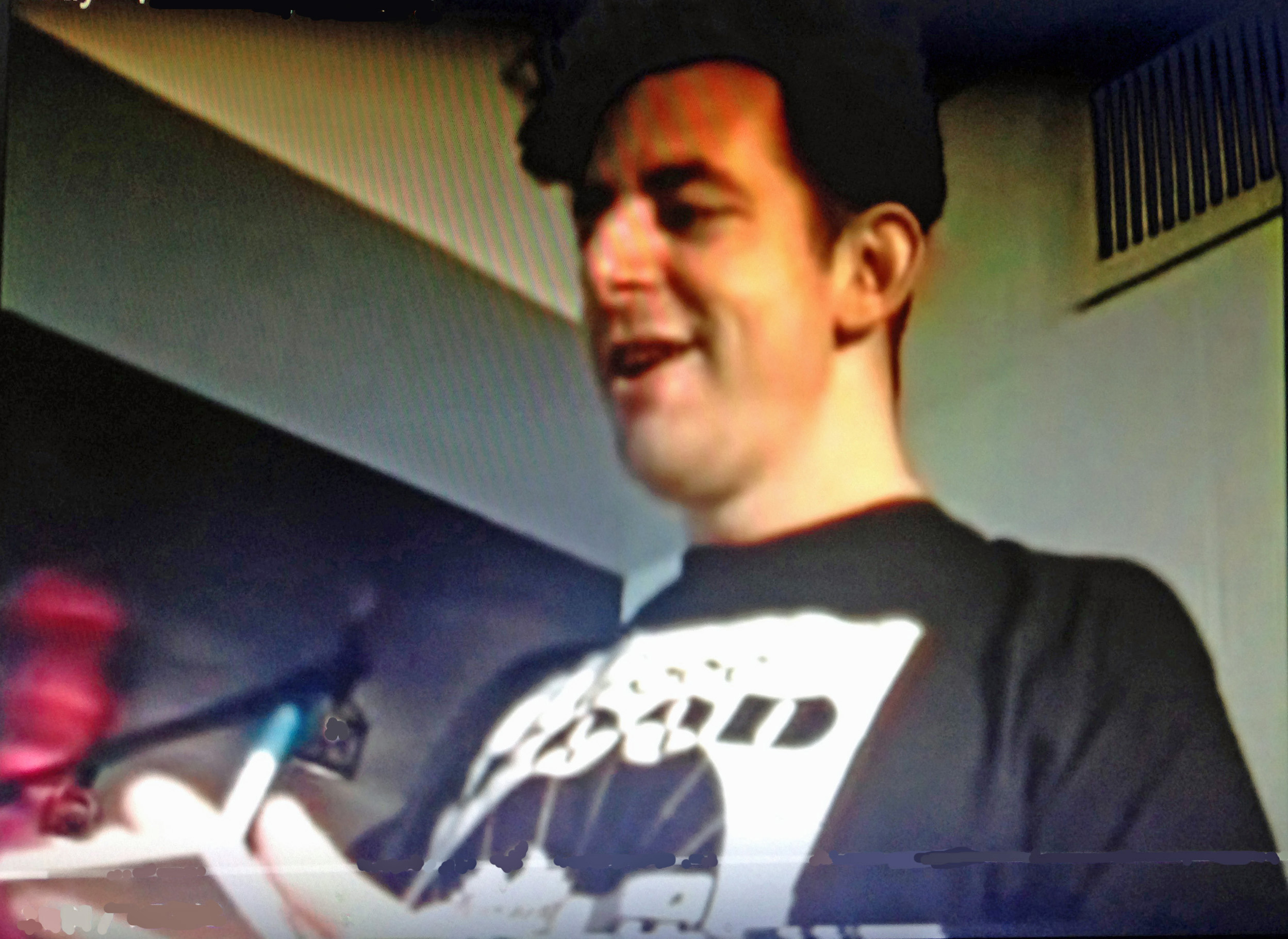
They produced 30/90 for two weekends in September of 1990 at Second Stage and it received mixed reactions. “Audiences were put off by his complaining that he wasn’t discovered,” says Leacock. “Of course they didn’t know how brilliant Jonathan Larson was and how important he’d turn out to be.”
So 30/90 went back into development. “Now Jonathan knew that it wouldn’t be produced again until after 1990, so the title had to be changed. He started calling it BoHo Days, based on our life in our neighborhood. BoHo was his nickname for `below Houston Street.’ BoHo also was meant to refer to Bohemian life. People already called the area south of Houston SoHo, but they didn’t know what BoHo meant. The name was Jonathan’s personal creation. This was before the era when everyone started using neighborhood nicknames like Dumbo (Down Under the Manhattan-Brooklyn Bridge) and NoLita (North of Little Italy).”
For the detail-minded, Larson’s BoHo was to the west of SoHo, closer to the Hudson River. He lived at 508 Greenwich Street, between Spring and Canal, a block away from the entrance to the Holland Tunnel. A walk of one mile straight down Greenwich Street brought you to the World Trade Center.
Because no one knew what BoHo meant, the show’s title had to be changed again. “During this second production of the play, our friend Pam was diagnosed HIV,” reports Leacock. “In our circle of friends first Matt, then Ali and Pam tested positive. Jonathan had slept with Pam, so he had to be tested and so did I. Both of us tested negative.”
Jon with his friend Pam: 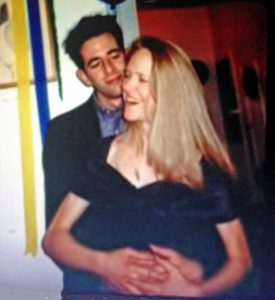
Leacock produced a version of tick…tick…Boom! at the Village Gate, in Greenwich Village, in 1991, and re-wrote it in 1992. “By this version he was so frustrated and distraught that it had a more negative sound,” says Leacock. “When we produced tick…tick…Boom! in 2001 we used a little of this, but mainly we followed Jonathan’s more optimistic 1989 version.”
The RCA recording of tick…tick…Boom! includes a track, at the end, of Larson singing “BoHo Days.”
As Larson’s friends Ali, Pam, Gordon and Matt became ill, he felt that tick tick Boom! was too much about his personal career and felt a need to write something with a larger scope that addressed drugs and AIDS more directly. Therefore he turned his attention to Rent.
In October 1990 Jeffrey Seller saw BoHo Days and wrote to Jonathan, “I was bowled over. Your work has an emotional power and resonance that I rarely experience in the theatre. You’re insightful, perceptive and very funny. I’m writing because, like you, I want to do great things in the theatre, but from the producing side…a domestic drama that touches on the dissolution of the American dream.” Seller would become one of the producers of Rent.
After the failure of Superbia, Ira Weitzman from Playwrights Horizons introduced Jonathan to Billy Aronson, a script writer who had the idea for a musical comedy based on La Boheme “The Bohemians,” set on the Upper West Side and populated with yuppies. Jonathan changed that setting. Interested in the impact of drug use and AIDS on his friends, Larson took over the project in 1991 and dropped the comic approach, though some Aronson lyrics remain in two songs and he receives financial compensation.
La Boheme was about poor artists living in squalid conditions in the Bohemian quarter of Paris. Jon typed a synopsis that began: “Rent is a rock opera inspired by La Boheme. Set in the present in New York’s East Village, it dwells equally on the social aspects of bohemia today as well as the love stories of the characters.”
Larson picked the show’s title because if its multiple allusions: Rent is the money you have to pay to live anywhere, and it’s derived from the word “rend” which means to rip or tear something apart in anguish or rage, and “rift” which is a breach of relations between people.
On the right, Jonathan and Michael Greif: 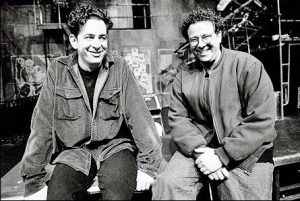
During the six months leading up to the premiere of Rent, Gordon and Pam died what Leacock describes as “particularly horrible AIDS deaths.” Victoria flew to Siberia to work on a documentary with her father. “I needed to get away after seeing Gordon and Pam die. I told Jon I’d come back in time to see Rent with him on his 36th birthday, February 4.” The circumstances of Larson’s death on January 25, 1996, just before the opening of Rent, have been written about so often that they needn’t be retold.
In 2001, at age 37, older than Jonathan ever was, Victoria Leacock became one of the producers of tick…tick…Boom!, with a script adapted by David Auburn. “I’m glad I took on this project. I feel more peaceful about Jonathan now. I think the musical has a wonderful message: stop running around, wake up and start living.”
Leacock says she’s frequently asked if Jonathan would have been surprised that his work won all those awards, “and I say no, he wouldn’t have been surprised at all, because he knew he was that good.”
Video of Larson singing his Sondheim parody: http://www.youtube.com/watch?v=1Deblb-QQ78

For stories about other Broadway songwriters, click here.